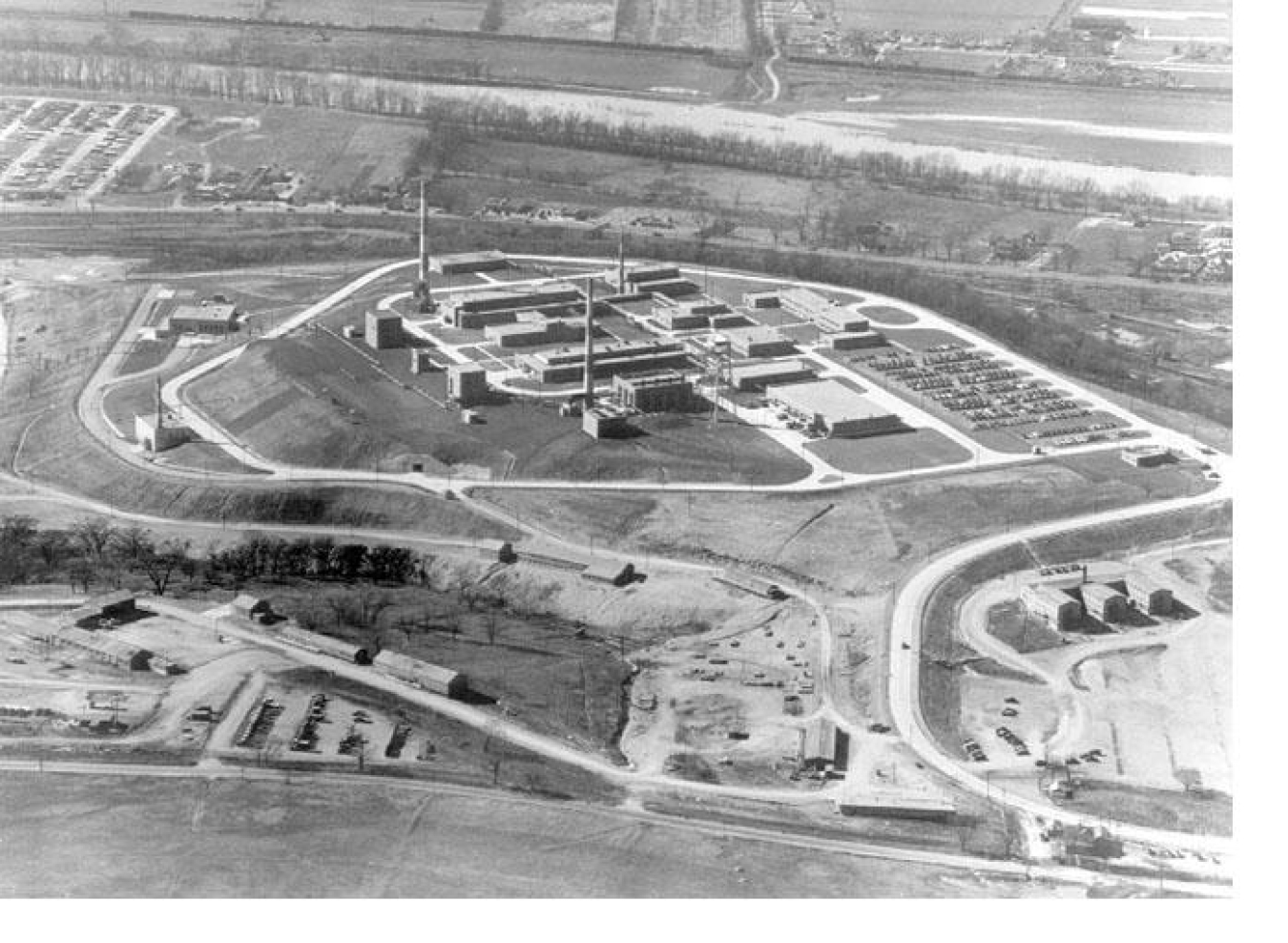
Construction of the Mound facility began in 1946 to support early U.S. atomic weapons programs. Early work at the site involved production of polonium-beryllium initiators used in atomic weapons and research related to radionuclides and detonators. In the 1950s, the facility manufactured a variety of nuclear weapons parts, including cable assemblies and explosive detonators, and electronic firing sets.
The Mound Site evolved into an integrated research, development, and production facility performing work in support of DOE weapons and energy programs, which included stable isotope separation, fossil fuels research, tritium recovery (for reuse in weapons), development of radioisotopic thermoelectric generators that provided electrical power for space exploration (Galileo), and other nonnuclear research and development. The facility operated from 1948 to 2003.
The site’s original 182 acres of land expanded in 1983 when DOE purchased an additional 124 acres south of the original property; the added property remained undeveloped. At its peak the Mound facility encompassed 116 buildings and employed over 2,500 highly skilled workers.
Since it began operations in 1948, the Mound, Ohio, Site has also been called the Mound Laboratory, Mound Laboratories, Mound Plant (EPA ID OH6890008984), USDOE Mound Plant, USDOE Mound Facility, Mound Environmental Management Project (MEMP), and Mound Closure Project (MCP).
DOE Office of Environmental Management (EM) divided the site into discrete land parcels which were remediated to an industrial use end state in accordance with CERCLA regulations. Between 1995 and 2011, EM issued records of decision that defined remedies for these parcels that included monitored natural attenuation with groundwater monitoring, operation of a pump and treatment system in Operable Unit 1, and sitewide institutional controls (ICs). ICs are non-engineered instruments, such as administrative and legal controls, that help minimize the potential for exposure to contamination and/or protect the integrity of a response action. The ICs run with the land in the form of restrictions and covenants in quitclaim deeds, or activity and use limitations in the environmental covenant. ICs are required because the end state is restricted to industrial use only.

